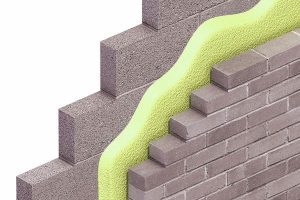What Are Walls Made Out Of?
Introduction
Walls are an integral part of any structure, providing support, enclosure, and protection. They have been used by civilizations for thousands of years, evolving from simple materials to more advanced and durable ones. In this article, we will explore the materials commonly used to construct walls, from ancient times to modern construction techniques. Understanding the composition of walls can shed light on the development of architecture and construction methods throughout history.
1. Traditional Wall Materials
1.1 Mud and Clay
One of the earliest materials used for constructing walls was mud and clay. Ancient civilizations, such as the Mesopotamians and the Egyptians, mixed mud and clay with straw or other organic materials to create bricks or blocks. These materials were abundant and easy to shape, making them an accessible option for early builders.
1.2 Stone
Stone is another traditional material that has been used for walls since prehistoric times. The construction of stone walls required skilled craftsmanship, as stones had to be precisely cut and laid to form stable structures. Various types of stones were used depending on the region, including limestone, granite, and sandstone. Stone walls are still admired today for their durability and timeless appearance.

1.3 Wood
In regions where wood was abundant, it became a common choice for wall construction. Early settlers in North America, for example, used logs to build log cabins, creating sturdy and well-insulated walls. However, wood is susceptible to decay and fire, which led to the development of other wall materials over time.
2. Advancements in Wall Construction
2.1 Bricks
Bricks have been utilized in construction for thousands of years, dating back to ancient civilizations. Initially made from mud and clay, bricks evolved into fired clay bricks, offering greater strength and durability. The uniform size and shape of bricks allowed for more standardized construction techniques, and they remain a popular choice in modern architecture.

2.2 Concrete
Concrete is a fundamental material in modern construction and is composed of cement, aggregates (such as sand and gravel), and water. It offers remarkable versatility and can be molded into various shapes. Reinforced concrete, which incorporates steel bars or mesh, enhances the material’s strength, making it suitable for taller and load-bearing walls.
2.3 Steel
Steel is commonly used in commercial and industrial buildings to create structural frames and load-bearing walls. Its high strength-to-weight ratio allows for tall and spacious structures, while also providing flexibility in design. Steel-framed walls are often filled with other materials like concrete, bricks, or panels to complete the wall assembly. For a citibuild construction builder vaucluse see this.
3. Modern Wall Materials
3.1 Glass
Advancements in glass technology have led to its increased usage in modern architecture. Glass walls, often made from tempered or laminated glass, provide transparency, allowing natural light to flood interior spaces and creating a sense of openness. Glass walls are popular in commercial buildings, offices, and modern residential constructions.
3.2 Insulated Concrete Forms (ICFs)
Insulated Concrete Forms, or ICFs, are a more recent innovation in wall construction. These forms consist of hollow foam blocks or panels that are filled with concrete. ICFs offer excellent insulation properties, reducing energy consumption and providing better temperature regulation within buildings.
3.3 Sustainable Materials
In response to environmental concerns, architects and builders are exploring sustainable materials for walls. These materials include recycled materials, bamboo, straw bales, and rammed earth. These eco-friendly alternatives aim to reduce the ecological footprint of construction while providing structurally sound walls.
4. Factors Influencing Wall Material Choice
4.1 Climate
The climate of a region plays a significant role in determining the appropriate wall material. For instance, regions with high rainfall might benefit from materials that are water-resistant, while areas prone to earthquakes may require flexible materials to withstand seismic activity.
4.2 Cost
The cost of materials can heavily influence the choice of wall construction. In areas with limited resources, traditional materials like mud, clay, and wood may be more economical, while wealthier regions can afford advanced materials like reinforced concrete and steel.
4.3 Aesthetics
Aesthetic preferences also come into play when selecting wall materials. Some architects may choose stone or glass for their visual appeal, while others may opt for sustainable materials to align with eco-friendly principles.
5. Conclusion
Throughout history, walls have been constructed from various materials, each reflecting the technological advancements and available resources of its time. From humble mud and clay to modern sustainable materials, the evolution of wall construction continues to shape the way we build and live in structures. As new materials and techniques emerge, we can expect the future of walls to be even more innovative and sustainable, combining functionality with aesthetic appeal. The choice of wall material will always be influenced by factors such as climate, cost, and design preferences, but the ultimate goal remains constant – to create safe, durable, and beautiful spaces for people to inhabit.
